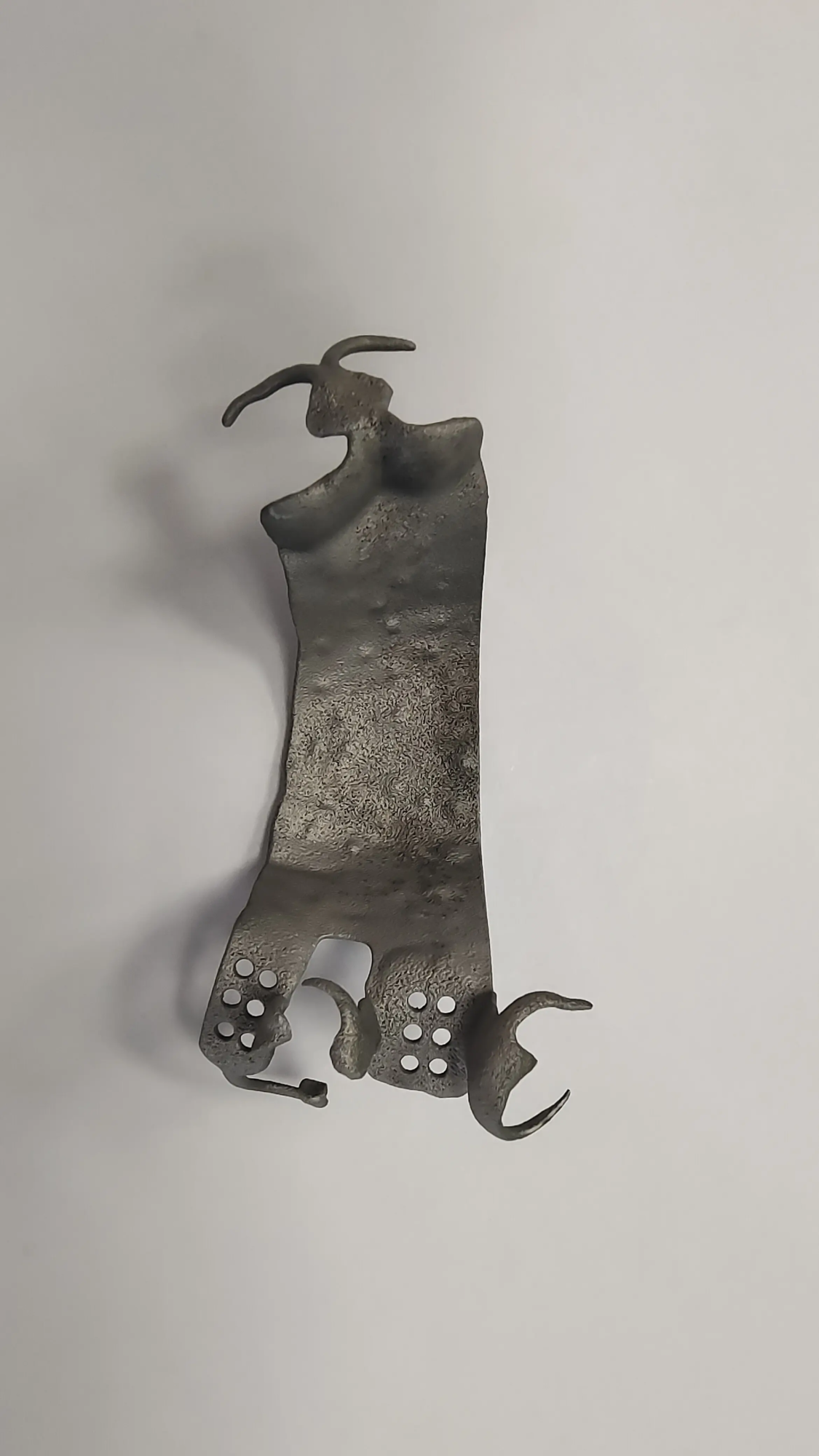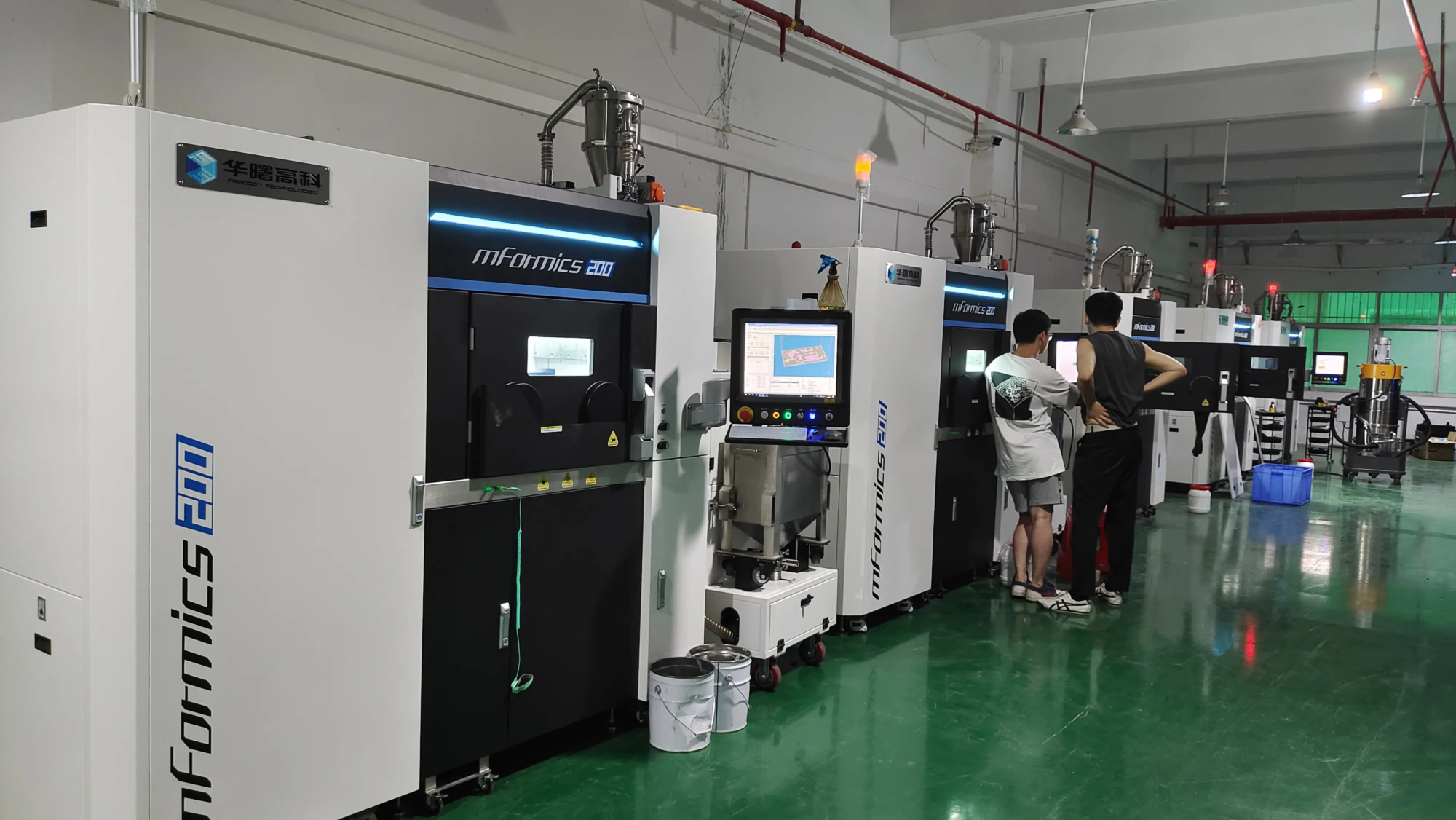Beyond Stickers: How 3D Printing Innovatively (Safe and Legal) Cut with OTF Knife
The top five (OTF) automatic knives are a miracle of precision engineering. Its lightning deployment relies on complex internal mechanisms, and its core is a key component: blade track or guide. The seemingly simple piece determines the path of the blade, ensuring smooth extension, solid locking and reliable retraction without swinging or binding. To put it wrongly, this means that the tool fails or feels like grinding your own knife. Traditionally, it is challenging and expensive to manufacture these guidelines with necessary tolerances, especially for prototyping or limited operation. Enter Metal 3D printing, especially selective laser melting (SLM) and a world of possibility, for designers, manufacturers and, crucially, innovative companies serving them.
OTF puzzle: Accuracy is not optional
The OTF knife works by converting linear motion along the orbit. Blade brackets driven by spring systems or inertia (depending on a single operation or dual action design) must slide forward and backward with absolute consistency. This guide interfaces directly with this carriage. Its work is multifaceted:
- Constrained Movement: Prevent lateral or rotating movement of the transport/blade during deployment and withdrawal.
- Low friction: Allows smooth travel to achieve fast, reliable action.
- Durability: Withstand repeated high impact deployment cycles without deformation.
- Accurate locking: When the blade expands and retracts, a critical mating surface is provided for the locking mechanism.
Even straightforward, parallelism, pore size, or microscopic deviations in the surface surface can lead to poor performance, excessive wear or catastrophic failure. While traditional CNC machining has the ability to fight complex internal geometries, it often requires weight loss or internal spring systems. Quick iterative designs are also often expensive.
SLM 3D Printing: Architectural Complexity, Provides Accuracy
This is where professional grade metal additive manufacturing (AM) is Selective laser melting (SLM)become a game changer in OTF guide production. SLM uses a high-power laser to selectively fuse fine metal powder particles layer by layer, thereby building parts with excellent detail from a sophisticated digital design.
This is why SLM is great for advanced OTF guide prototyping and production:
- Unparalleled geometric freedom: Say goodbye to the limitations of machining and cutting tools. SLM allows the creation of complex internal channels, complex curved surfaces, integrated lattice structures for lightweight, and the function is Impossible Go to the machine. Thinking about optimized hollow sections can reduce mass without sacrificing strength or fully conform to the unique blade shape.
- Exactly match CNC: Modern professional SLM systems, such as those used by leading manufacturers, achieve dimensional tolerances (±0.05mm to ±0.1mm), and surface finishes are suitable for demanding applications such as OTF Guides, which are directly from under the printer and can be further achieved through post-processing.
- Material properties: SLM works with high-performance alloys that are essential for tool composition:
- Aluminum alloy (e.g., Alsi10mg): Lightweight, good balance of corrosion resistance, strength and cost – perfect for many guide applications.
- Stainless steel (e.g., 316L, 17-4 pH): Excellent corrosion resistance and durability, 17-4 pH can provide high strength by heat treatment.
- Titanium alloys (such as Ti6al4v): Final strength to weight ratio, special corrosiveness and biocompatibility (for certain professional uses). Ideal for advanced, high performance guides, requiring minimal weight.
- Tool Steel (e.g., Maraging Steel -18NI300): After heat treatment, avoid extreme hardness and wear resistance, suitable for extreme guidelines for expecting large cycle counts.
- Quick iteration and prototype: The key to the perfect OTF guide is improvement. 3D printing allows for the iteration of design production and testing in days or even hours rather than weeks. The CAD modifications are directly converted into printed parts, allowing engineers to quickly test different geometry, tolerances, thicknesses, or material behaviors in actual tool mechanisms. This greatly accelerates the R&D cycle.
- Production flexibility: Need a custom guide to a small batch of limited-edge knives? Or a prototype that performs functional testing before committing to expensive tools? Metal AM economically provides no need for expensive molds or specialized fixtures.
Guide to designing and printing high-performance OTFs: Key considerations
Efficient use of AM to obtain OTF guides requires expertise "Print":
- Direction strategy: The partial orientation of the construction interior can significantly affect the surface finish (especially crucial on sliding surfaces), the need for support and mechanical isotropy.
- Slicing and Support Design: Intelligent slice parameters and well-designed, minimal density support are critical for dimensional accuracy on internal cavity and critical bearing surfaces while minimizing post-processing efforts.
- Thermal management: SLM produces significant heat. Predicting and mitigating thermal distortion through simulation and clever design is critical for long, slender, highly tolerant parts (such as the guide).
- Stress concentration and fatigue analysis: FEA (finite element analysis) integrated into the design workflow helps identify and strengthen potential weaknesses, ensuring that guidelines can withstand thousands of cycles of repeated high-impact deployment.
- Post-processing: Although SLM provides a good finish, the guide is often done:
- Support removal: Remove carefully without damaging the delicate features.
- Heat treatment: Relieving stress is critical; precipitation hardening (such as 17-4 pH or Maraging steel) maximizes strength/wear resistance.
- Precision machining: Critical pores or mating surfaces may undergo micromechanical cooperation (CNC or EDM) to achieve final tolerances.
- Surface reinforcement: Professional coatings such as polishing, vibrating finishes or DLC (similar to diamond-like carbon) can further reduce friction and enhance wear resistance.
Why work with professional rapid prototyping experts?
While desktop 3D printers offer accessibility, they can generate powerful, high-precision, secure OTF guidelines that require industrial-grade equipment, materials science expertise and in-depth process understanding. This is what the company likes Great Excel.
- Industrial SLM functions: Ensure material quality, precise layer control, and controlled inert atmospheres that are critical to reactive metals such as titanium and aluminum, providing excellent mechanical properties and dimensional accuracy with advanced SLM printers.
- Materials Science Expertise: Understanding the performance of different alloys during printing, sintering and heat treatment is critical to achieving the desired strength, hardness and fatigue resistance.
- Project support: Working with experienced providers provides valuable insights at the design stage (Additive Manufacturing Design – DFAM Design) to optimize performance and manufacturing guidelines.
- Integration post-processing: The coating function in CNC, EDM, heat treatment furnace, surface finishing and one facility ensures ready assembly parts.
- Speed and efficiency: As a leading provider of rapid prototyping solutions, we excel in tight deadlines, functional prototypes or small batches in hand.
- Reliability and quality: Strict quality control processes, dimensional inspection (CMM) and material certification ensure that each guide meets the strict requirements of the OTF knife.
Conclusion: Precise design, perfect deployment
The humble OTF blade guide proves the precision required for modern knife engineering. Metal 3D printing powered by SLM technology has revolutionized the development and production of these critical components. It unlocks new design possibilities – guides for lighter, stronger, more complex and functional optimization that were previously unavailable. It can quickly iterate and cost-effective prototyping to accelerate innovation. Crucially, it allows manufacturers to create guides using the strict tolerances, material properties and surface finishes required for perfect tooling, reliability and life.
For designers to push the boundaries of OTF knife technology, please accept professional SLM services from trusted providers Great It’s not just an advantage; it has become essential. This is the key to turning cutting-edge design into a powerful, reliable reality to ensure the ultimate "Click" Always satisfying and safe.
FAQ: 3D Printed OTF Knife Guide
Q1: Is 3D printed OTF knife parts legal?
one: Laws vary widely by country, state and region. While printing components (such as the guide itself), it is usually a manufacturing step, but the legality of legitimacy have In many jurisdictions, especially for dual operations, OTF knives built with such parts are height-adjusted. Always comply with all local, state and federal laws regardless of the production method before attempting to manufacture, own, or use any component targeting one person. This article discusses the technical capabilities of prototype manufacturing and professional manufacturing within the legal framework.
Question 2: Can I print OTF guide on a home FDM (plastic) printer?
A: Although technically possible Model Or prototypes used to test fit Plastics (even high-strength wire) are totally unsuitable for functional OTF guide. The OTF mechanism has experienced high influence and friction. Plastic guides can quickly deform, wear, crush or cause catastrophic failures, making the knife unreliable and potentially dangerous. Only powerful metal alloys are available for pressure, sliding, locking parts.
Q3: What are the biggest advantages of using metal 3D printing for OTF guides rather than CNC machining?
Answer: The key advantages are:
- Complex geometric shapes: Creating internal channels, grids, custom configuration files cannot be processed.
- Rapid prototyping: A drastically faster, cheaper iteration loop for design sophisticated.
- Lightweight: A significant amount of weight can be saved by optimizing the internal void without sacrificing the required strength.
- Small batch economics: Cost-effective prototypes, custom designs or limited edition production without expensive tools.
- Material flexibility: Easily switch between aluminum, stainless steel, titanium or tool steel powder as needed.
Question 4: Can 3D printing achieve the necessary strength and durability of OTF guidelines?
one: Absolutely, use professional SLM/DMLS treatment and suitable metal alloys. Printed metal parts are post-processed (sintering, heat treatment (such as pressure relief or precipitation hardening)) to achieve material properties, usually comparable to, and sometimes even exceeding, the material of cast or forged materials. Design optimization is critical, but SLM is absolutely able to produce guides that are durable enough to achieve thousands of deployment cycles. Material selection (e.g. 17-4 pH, Maraging Steel, TI64) further ensures high strength and wear resistance.
Q5: What is the typical lead time for the prototype batch of 3D Printing OTF Guide?
A: One of the main benefits of working with a professional rapid prototype company Great It’s speed. Complex SLM prototypes, including necessary post-processing, can usually be found in How many days or weeksnot a typical month for traditional tool-based approaches. Factors include design complexity, material selection, the amount of post-processing required, and current store workload. It is recommended to contact the service provider directly for a quote for a specific project.
Question 6: My design requires a very smooth sliding surface inside a narrow channel. Can SLM achieve this?
Answer: Achieve stability Internal Channels are one of the advantages of SLM compared to other metal AM methods. Although the inner surface will have a slight elastic roughness due to the layer lines (the RA value is higher than the polished metal), SLM produces a significantly smoother finish inside than an adhesive jet. Additionally, critical internal bearing surfaces can be designed for minimal contact wear areas and/or designated for secondary microbuffering or specialized post-application processes (such as precision grinding or polishing) to achieve the necessary low coefficient of friction. Design optimization (optimal directional channels) also plays a key role.
—
Partnering with your next cutting-edge project
Unlock the potential of metal 3D printing for demanding OTF guidelines and future applications. Great Provides industrial SLM technology, deep material expertise, engineering guidance and comprehensive finishing services to transform the most complex designs into high-performance, reliable metal parts. Today, experience the speed and flexibility of professional rapid prototyping. Contact us to get started!





